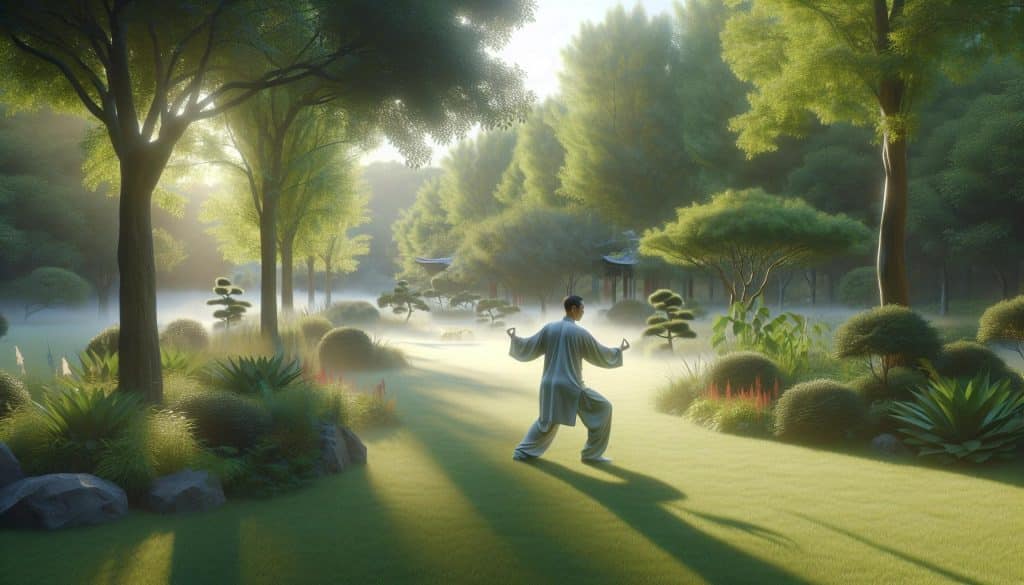Ever wondered about the world of “Yi He”? You’re not alone. It’s a term that’s been gaining traction lately, yet remains shrouded in mystery for many. This ancient Chinese concept, deeply rooted in Eastern philosophy, is more relevant today than ever before.
In our fast-paced, modern lives, “Yi He” offers a refreshing perspective. It’s a philosophy that encourages harmony and balance, principles that are often overlooked in our pursuit of progress. But what does it really mean? How can it be applied in our everyday lives?
Get ready to embark on a fascinating journey as we delve into the heart of “Yi He”. You’ll discover its origins, understand its principles, and learn how to integrate this philosophy into your daily routine. It’s time to explore the untapped potential of “Yi He” and how it can bring about a profound change in your life.
Understanding Yi He: An Overview
Yi He, an ancient philosophy deeply rooted in the East, continues to draw attention and relevance in today’s fast-paced world. The following in-depth overview delves into its origins and key principles, providing insights into why its teachings maintain a favorable impact on modern society.
The Origins and History of Yi He
Yi He, translated into English as ‘harmonious unity,’ has a rich lineage dating back to the formation of Eastern philosophical thought. Its teachings are intertwined with seminal philosophical schools such as Daoism and Confucianism.
At the heart of its inception was an aspiration for balance—a way to restore peace in a chaotic society. Through the ages, Yi He has emerged as more than a philosophical concept; it has become a way of life for those dedicated to the pursuit of harmony. Despite changing times, its essence remains unaltered, providing a compass to navigate the turbulent waters of present-day existence
Key Principles and Philosophies Behind Yi He
Unveiling the power of Yi He demands recognizing its key principles. Embedded within every thought, these principles act as guidance towards a harmonious life.
Primarily, Yi He emphasizes balance. This philosophy stresses the importance of equilibrium in both internal and external environments. And harmony, as per the lessons of Yi He, isn’t static—it’s a dynamic equilibrium that involves continuous adaptation to the environment.
Another cornerstone of Yi He is unity. It professes the interconnectedness of everything in the universe—nothing exists in isolation. Understanding this interconnectedness leads to an entirely new perspective of seeing the world and living within it.
Finally, the concept of transformation stands prominent in Yi He’s teachings. Constant change is a fundamental rule of life, and acceptance of this truth imbues a sense of peace.
With its origins steeped in history and its principles radiating wisdom, Yi He proves that age-old philosophies still hold valuable lessons for the modern world. It’s a testament to how time does not erode certain truths but accentuates their importance. Let the teachings of Yi He influence your life for a more harmonious existence. For, in the end, a balance between the mind and the surroundings paves the path towards tranquillity.
Yi He Practices Around the World
Delving further into Yi He, let’s consider its global adoption, modified traditions, and diverse implications. The philosophy extends influence far beyond its origins, inspiring practices across the world. It’s enthralling to discover how Yi He “paved its way” across continents in cultural diffusion.
Yi He in Asia: Traditions and Modern Adaptations
In Asia, particularly its cradle, China, Yi He holds significant cultural sway. Its core tenets like harmony, balance, and unity, have deeply woven in the societal fabric. For instance, in martial arts such as Tai Chi, one observes an embodiment of Yi He through fluid movements, reflecting a perfect balance of mind and body.
Modern adaptations are equally interesting. Smart cities like Singapore heavily draw upon Yi He principles in urban planning with green spaces amidst bustling cityscapes, maintaining a dynamic equilibrium between nature and progress.
Within the corporate landscape, companies integrate Yi He into their leadership models. It’s used to unite diverse teams, foster empathy, and create harmonious work environments.
The Spread of Yi He to Western Societies
In the West, Yi He has penetrated many aspects of society, translated through mindfulness movements and sustainable living practices. A clear example is the rise of minimalism, an embrace of ‘less is more’, aligning with Yi He’s principle of unity and simplicity.
Moreover, its influence can be seen in therapeutic modalities, like yoga and meditation, where individuals seek mental balance and self-realization.
Yi He’s foundational beliefs of interconnectedness also resonate with the scientifically-backed ecological perspective, challenging the Western dualistic mindset. It propels an integrated view of humanity and its relationship with the environment, reinforcing the need for sustainable practices.
Collectively, the global acceptance of Yi He, an ancient Chinese philosophy, bespeaks its timeless relevance in a rapidly evolving world. Whether it’s East or West, traditional or modern, Yi He’s principles continue guiding societies towards harmony and balance.
The Impact of Yi He on Health and Wellness
Building on previous knowledge about the philosophy of Yi He, we now focus on its specific implications for health and wellness. Various scientific studies and personal accounts validate the potential benefits that this philosophy could offer, providing more insights into the effective application of its principles to improve wellbeing.
Physical Benefits of Practicing Yi He
Practicing Yi He can greatly contribute to physical health. The principles of this philosophy, often embodied through Tai Chi and yoga, emphasize flow, balance, and the unity of movements which optimize flexibility, strength, and cardiovascular health. Regular participation in such physically engaging activities fosters better body posture, thereby decreasing the risks of chronic issues such as back and neck pain.
For instance, a 2014 study published in the Arthritis Care & Research journal supports this, showing improvement in balance and physical function among older adults who participated in Tai Chi influenced by the principles of Yi He. Additionally, the American Heart Association reports on how incorporating Tai Chi into daily routines can have a positive effect on blood pressure and heart rate.
Psychological and Emotional Benefits
Yi He not only promotes physical solace but also cultivates emotional health. Reflecting on its principles allows for a fostering sense of inner peace and reduced anxiety levels. Its teachings of harmony and interconnectedness bring about a grounded outlook on life, reducing feelings of isolation and loneliness.
PositivePsychology.com cites myriad studies illustrating the benefits of mindfulness exercises- a central tenet of Yi He, which includes reducing stress, increasing focus, and developing a higher level of emotional intelligence. For instance, a report by the American Psychological Association indicated that individuals who practice mindfulness exhibit fewer symptoms of anxiety and depression.
Remember, the impact of Yi He on health and wellness is subjective, and the amount of commitment and understanding of its principles determines the level of benefit attained. By incorporating Yi He’s teachings into life, an enriched sense of wellbeing is achievable. Delve into this philosophy, apply it to everyday circumstances, and observe how it can influence one’s journey towards balanced health and wellness.
Yi He in Popular Culture and Media
Applying the ancient philosophy of “Yi He” extends beyond academic or health and wellness fronts. Its influence penetrates popular culture mediums, including books and films, promoting the principles of balance and harmony.
Influential Books and Publications on Yi He
Several authors and scholars have explored the rich doctrine of Yi He. It’s in these written works where we find a trove of insights on the subject.
- “The Power of Balance: Living the Yi He Life” by Tsai Ming-Jing. Delving deep into the Yi He traditions, Tsai outlines practical methods to incorporate balance into daily life. The author explores real-life scenarios where the philosophy serves as a guidepost for dealing with adversity.
2.”Ilumina: Applying ancient wisdom in Modern Times” by Acharya Shunya. A renowned spiritual teacher, Shunya elucidates the application of eastern philosophies like Yi He in contending with contemporary challenges.
- Interactive Publications like “Balance and Harmony: Illustrated Lessons from Yi He.”. It’s an interactive workbook that helps readers grasp Yi He principles through illustrative examples and engaging activities.
Remember, understanding Yi He begins with the reading, but mastery comes from practicing the principles consistently.
Yi He in Films and Documentaries
Yi He’s impact isn’t limited to literature. It permeates visual narratives, particularly films and documentaries, where it plays a central role in shaping narratives on balance and harmony.
- “The Monk Who Sold His Ferrari” – This film adaptation of a best-selling book deals with a high-profile lawyer’s journey as he leaves behind material wealth for a life of balance and tranquility – the embodiment of Yi He.
- “Yi He: The Way of Balance” – A documentary from the heart of China that chronicles the daily lives of individuals who have adopted Yi He as a way of life.
Remember, each film or documentary explores the philosophy from a unique perspective, offering viewers an all-rounded impression of Yi He. Look beyond the entertainment factor of these films, and you’ll discover a wellspring of wisdom and inspiration in applying Yi He in your life.
Conclusion
So you’ve journeyed through the world of Yi He, exploring its roots, principles, and influence. You’ve seen how it shapes health and wellness, enhancing physical fitness and emotional stability. It’s evident that commitment and understanding are key to reaping the full benefits of this philosophy. You’ve also discovered Yi He’s reach in popular culture, from enlightening books to inspiring films. Now, it’s up to you to embrace the lessons of Yi He. Whether it’s through Tai Chi, yoga, or mindfulness, you can find your path to harmony and balance. Remember, Yi He isn’t just a philosophy—it’s a way of life. So go ahead, take the first step towards a balanced, harmonious life. The world of Yi He awaits you.
What is the focus of Yi He philosophy?
Yi He, an ancient Chinese philosophy, emphasizes harmony and balance in all aspects of life. It underlines the importance of connecting with one’s self, the environment, and the universe to achieve equilibrium in one’s life.
How does Yi He influence mental and physical health?
Practicing Yi He principles, such as through Tai Chi and yoga, brings physical benefits like improved flexibility and cardiovascular health. Moreover, it fosters inner peace and reduces anxiety levels, promoting emotional well-being.
What does scientific research say about Yi He’s benefits?
Research backs Yi He’s advantages, demonstrating enhancements in balance and reductions in chronic health issues. The impact varies among individuals, reflecting one’s understanding and commitment to Yi He principles.
Does Yi He have an influence on literature and cinema?
Yes, Yi He influences global literature and cinema. Various authors and filmmakers have incorporated its teachings into their works, providing readers and audiences with insights into achieving balance and harmony in life.
Can I learn Yi He principles practically?
Yes, interactive publications offer practical strategies that exemplify Yi He principles. Additionally, physical activities like Tai Chi and yoga teach these principles in action, offering hands-on learning experiences.






